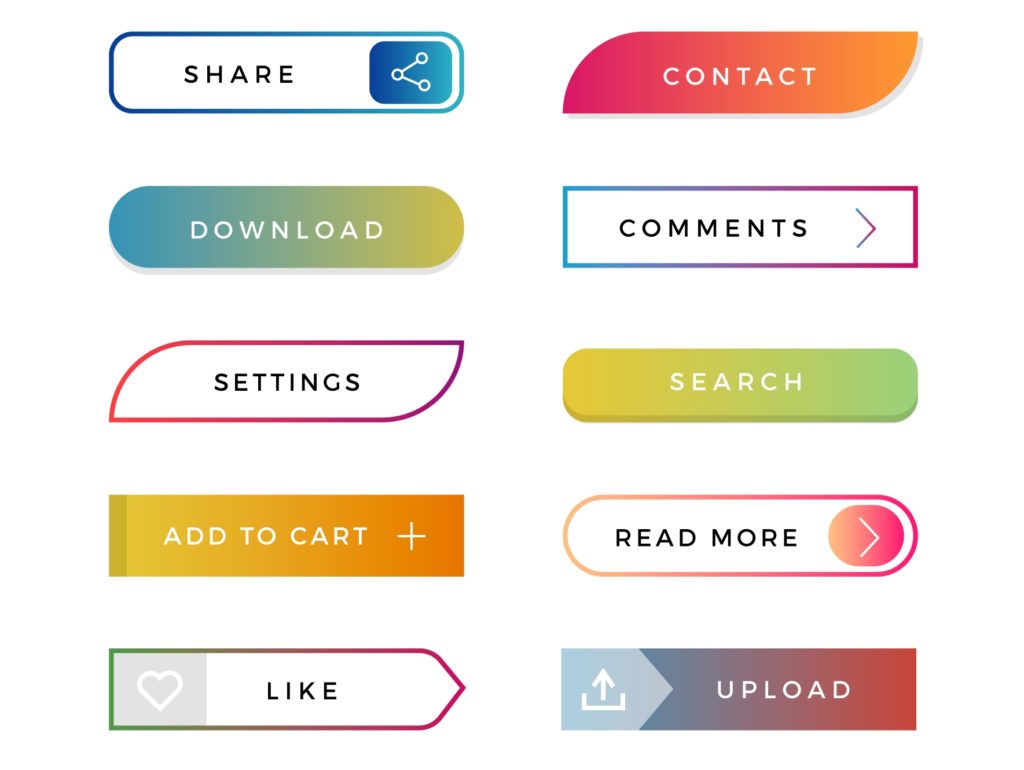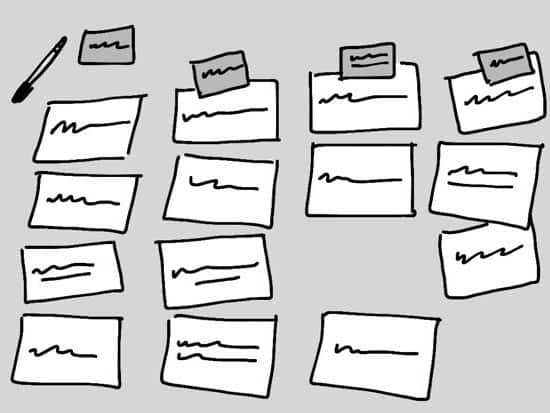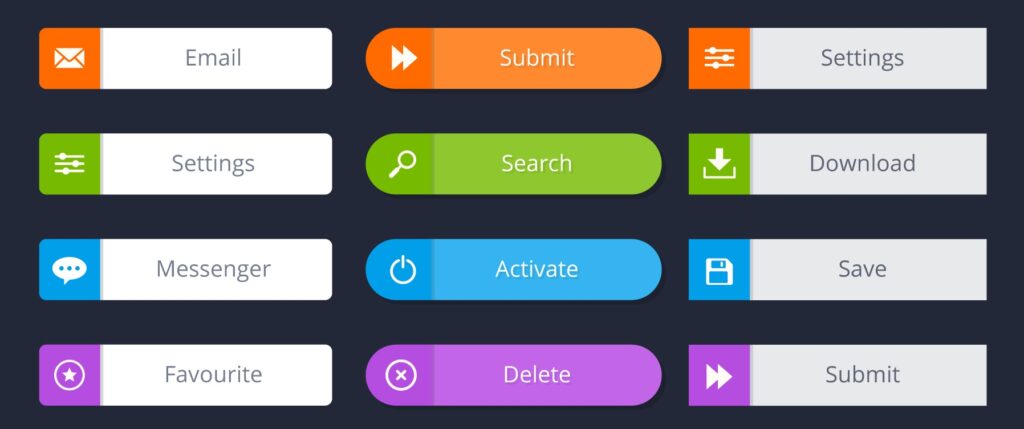
Introduction to labeling
| English | Polish |
|---|---|
Labeling, in the most basic sense, is a type of representation. On the web, we use labels to represent larger chunks of information simply because we can’t crowd every page with too much information – it’s just not practical and it doesn’t look very nice. | Etykietowanie, w najbardziej podstawowym sensie, jest rodzajem reprezentacji. W internecie używamy etykiet do reprezentowania większych fragmentów informacji dlatego, że nie możemy wypełnić każdej strony nadmierną ilością informacji – po prostu nie jest to praktyczne i nie wygląda zbyt ładnie. |
Take an ‘About us’ label that you might find on an organization’s homepage as an example. For most users, this label means that by clicking on it, they’ll find information about the organization – office locations, staff, company history, etc. Because we can’t list all of this detail on the homepage, we use the label ‘About us’ to trigger the right association in the user’s mind. | Weźmy na przykład etykietę „O nas”, którą można znaleźć na stronie głównej organizacji. Dla większości użytkowników etykieta ta oznacza, że klikając w nią, znajdą oni informacje na temat organizacji – o lokalizacji biura, personelu, historii firmy itp. Ponieważ nie możemy wymienić wszystkich tych szczegółów na stronie głównej, używamy etykiety „O nas”, aby wywołać właściwe skojarzenia w umyśle użytkownika. |
We can use all sorts of labels for this purpose throughout a website, which in turn means we can keep our pages as clear and understandable as possible, making it easier for users to find what they’re actually looking for. | Możemy używać do tego celu wszelkiego rodzaju etykiet na całej stronie internetowej, co z kolei oznacza, że nasze strony mogą być bardzo przejrzyste i zrozumiałe, ułatwiając użytkownikom znalezienie tego, czego faktycznie szukają. |
Good labeling versus bad labeling
| English | Polish |
|---|---|
Effective labels are simple and focused. Ideally, the labels on your website should be written using language that’s easily understandable to your users and reflects the content that’s behind them. After all, labels are designed to trigger associations in your users’ minds, allowing them to make their way through your website as quickly and with as little trouble as possible. | Skuteczne etykiety są proste i precyzyjne. Idealnie byłoby, gdyby etykiety na stronie internetowej były napisane językiem łatwo zrozumiałym dla użytkowników i odzwierciedlały treść, która za nimi stoi. W końcu etykiety są zaprojektowane tak, aby wywołać skojarzenia w umysłach użytkowników, pozwalając im na przejście przez stronę możliwie szybko i bezproblemowo. |
How to improve your labeling
| English | Polish |
|---|---|
With an understanding of why labeling is so important, how should you go and effect these changes on your own website? In general, you should be able to base the majority of your labeling decisions on best practice, whether that’s web best-practice or industry best practice. Labeling depends on user association, so it’s a good idea to follow good examples of what’s come before. Here’s some more guidance for improving your labeling: | Rozumiejąc, dlaczego etykietowanie jest tak ważne, można się zastanawiać, jak dokonać zmian na stronie internetowej. Ogólnie rzecz biorąc, większość decyzji dotyczących znakowania powinna opierać się na najlepszych praktykach, niezależnie od tego, czy są to najlepsze praktyki internetowe czy najlepsze praktyki branżowe. Etykietowanie zależy od skojarzeń użytkownika, więc dobrym pomysłem jest wzorowanie się na wcześniejszych, dobrych przykładach. Oto więcej wskazówek, jak poprawić etykietowanie: |
Make a list: Before doing any work on your labels, write a list of all of them to get a visual representation of what you’re dealing with. This will help you to identify any potential doubles, overlaps or strange outliers that don’t really fit or make sense. | Zrób listę: przed wykonaniem jakiejkolwiek pracy na etykietach spisz je wszystkie, aby uzyskać wizualną prezentację tego, z czym masz do czynienia. Pomoże ci to zidentyfikować wszelkie potencjalne dublety, nakładanie się lub nietypowe elementy, które w ogóle nie pasują lub nie mają sensu. |
Use your search log: Your website’s search log is a goldmine of labeling guidance. Access will depend on the platform your website is built on, but you’re often able to see exactly what people are searching for – useful when assessing whether your own labeling lines up. | Użyj rejestru wyszukiwania: rejestr wyszukiwania na twojej stronie internetowej jest kopalnią wskazówek dotyczących etykietowania. Dostęp do niego będzie zależał od platformy, na której zbudowana jest strona, ale często można zobaczyć dokładnie to, czego użytkownicy szukają. Jest to przydatne przy ocenie, czy twoje etykiety są dopasowane. |
Look at your competitors: It doesn’t take much time and it’s also free. Head over to the websites of your competitors and look at their labeling systems. Do they make sense? Why? Why not? Are they doing anything useful or interesting that you could adapt for your own labeling system? | Spójrz na konkurencję: to nie zajmuje dużo czasu i też jest za darmo. Odwiedź strony internetowe konkurencji i zapoznaj się z ich systemami etykietowania. Czy mają one sens? Dlaczego? Dlaczego nie? Czy są w jakiś sposób pożyteczne lub interesujące, abyś mógł dostosować je do swojego systemu etykietowania? |
Plan for the future – as best you can: While it’s not essential that the labeling system you build now account for any future adjustments, understanding how it could change will make your life much easier in the future. | Planuj na przyszłość – najlepiej jak potrafisz: chociaż nie jest konieczne, aby system etykietowania, który budujesz teraz, uwzględniał wszelkie przyszłe zmiany, to jednak zrozumienie, jak może się on zmienić, znacznie ułatwi ci życie w przyszłości. |
Run a survey: Using a survey tool like Questions, run a survey with a representative sample of your users to work out which labels make sense – and which don’t. | Przeprowadź sondaż: za pomocą narzędzia takiego jak Questions przeprowadź ankietę na reprezentatywnej próbie użytkowników, aby ustalić, które etykiety mają sens, a które nie. |
Group and label your content: Figure out how the content on your website should be grouped and labeled. To ensure your system makes sense to your users, consider using card sorting. | Grupuj i etykietuj treści: pomyśl, jak pogrupować i oznaczać treści na stronie internetowej za pomocą etykiet. Aby upewnić się, że system jest sensowny dla użytkowników, rozważ przeprowadzenie sortowania kart Aby upewnić się, że system jest sensowny dla użytkowników, rozważ przeprowadzenie sortowania kart. |

Tree testing and information architecture
| English | Polish |
|---|---|
Tree testing is a usability technique for evaluating the findability of topics in a website. It’s also known as ‘reverse card sorting’ or ‘card-based classification’. Tree testing is done on a simplified text version of your site structure – without the influence of navigation aids and visual design. | Test drzewa jest techniką badania użyteczności wykorzystywaną do oceny łatwości odnajdywania tematów na stronie internetowej. Jest ona również znana jako „odwrotne sortowanie kart” lub „klasyfikacja na podstawie kart”. Test drzewa odbywa się na uproszczonej, tekstowej wersji struktury strony, bez udziału elementów nawigacyjnych i wizualnych. |
Tree testing tells you how easily people can find information on your website, and exactly where people get lost. Your website visitors rely on your IA – how you label and organize your content – to get things done. Tree testing can answer questions like: | Test drzewa pozwala dowiedzieć się, jak łatwo użytkownicy mogą znaleźć informacje na stronie internetowej i gdzie dokładnie się gubią. Odwiedzający stronę internetową wykorzystują architekturę informacji – etykiety i organizację zawartości – aby zrealizować zadania. Test drzewa pozwala odpowiedzieć na takie pytania, jak: |
1. Do my labels make sense to people? 2. Is my content grouped logically to people? 3. Can people find the information they want easily and quickly? If not, what’s stopping them? | 1. Czy moje etykiety mają sens dla użytkowników? 2. Czy moje treści są pogrupowane logicznie? 3. Czy użytkownicy mogą łatwo i szybko znaleźć poszukiwane informacje? Jeśli nie, to co ich powstrzymuje? |

Card sorting and information architecture
| English | Polish |
|---|---|
Card sorting is a well-established research technique for discovering how people understand and categorize information. You can use card sorting results to group and label your website information in a way that makes the most sense to your audience. | Sortowanie kart jest ugruntowaną techniką badawczą służącą do odkrywania, jak ludzie rozumieją i kategoryzują informacje. Możesz wykorzystać wyniki sortowania kart do grupowania i etykietowania informacji na stronie internetowej w sposób, który ma największy sens dla twoich odbiorców. |
Card sorting is useful when you want to: 1. Design a new website or section of a website, or improve an existing website. 2. Find out how your customers expect to see your information grouped on your website. 3. Discover and compare how people understand different concepts or ideas. 4. Get people to rank or arrange items based on set criteria. | Sortowanie kart jest przydatne, kiedy chcesz: 1. Zaprojektować nową stronę internetową lub jej sekcję albo poprawić istniejącą witrynę. 2. Poznać oczekiwania klientów związane z grupowaniem informacji na twojej stronie internetowej. 3. Odkryć i porównać, jak użytkownicy rozumieją różne koncepcje i pomysły. 4. Skłonić użytkowników do sklasyfikowania lub ułożenia elementów w oparciu o ustalone kryteria. |
Exercises
Exercise 1.
Answer the questions
- What is labeling?
- What do labels represent? Why?
- What should labels be like?
- Why is it a good idea to make a list of labels?
- What is the website’s search log useful for?
- What can you learn from the survey?
- What is tree testing?
- What is findability?
- What questions can tree testing answer?
- What is card sorting and when is it useful?
